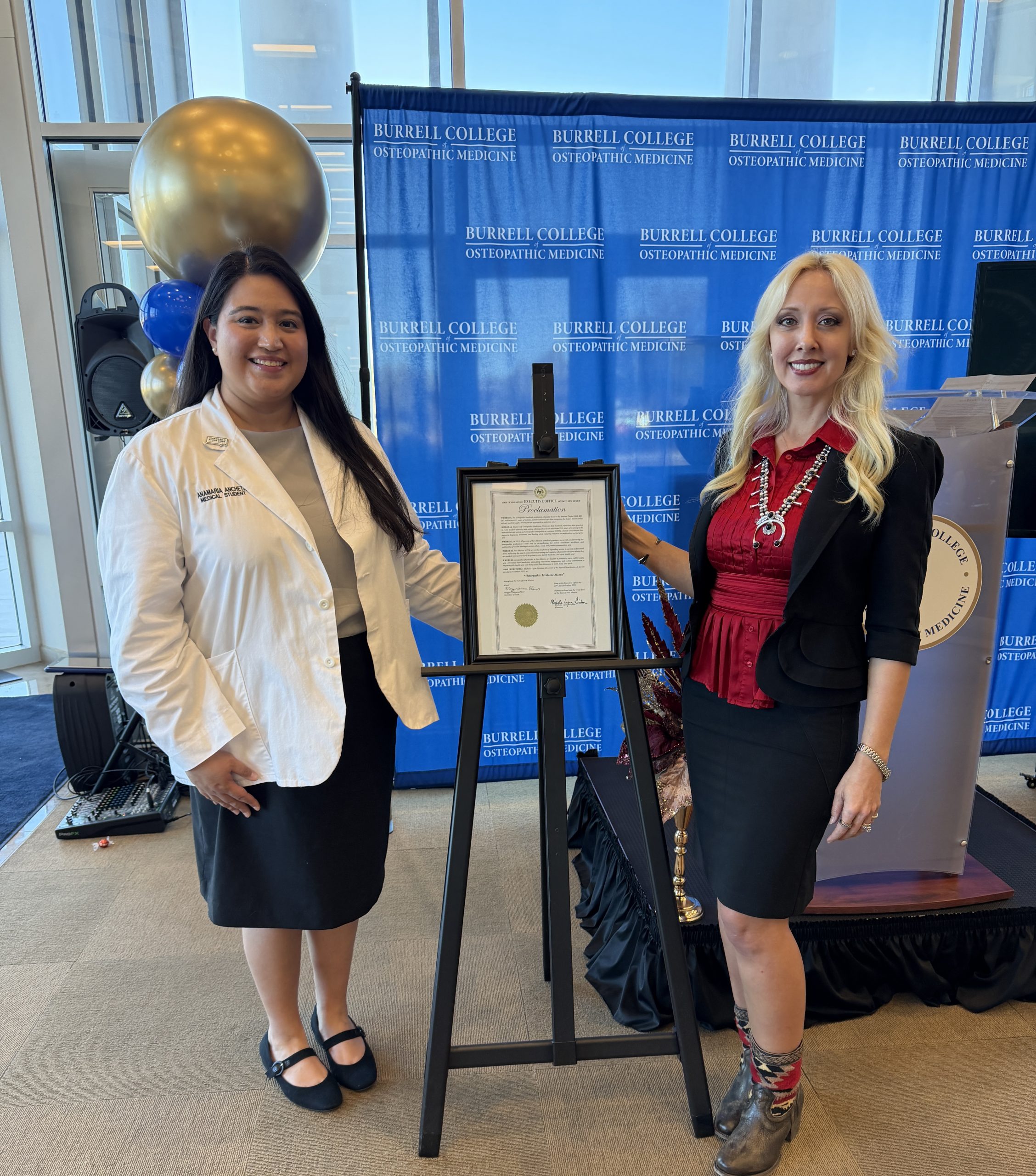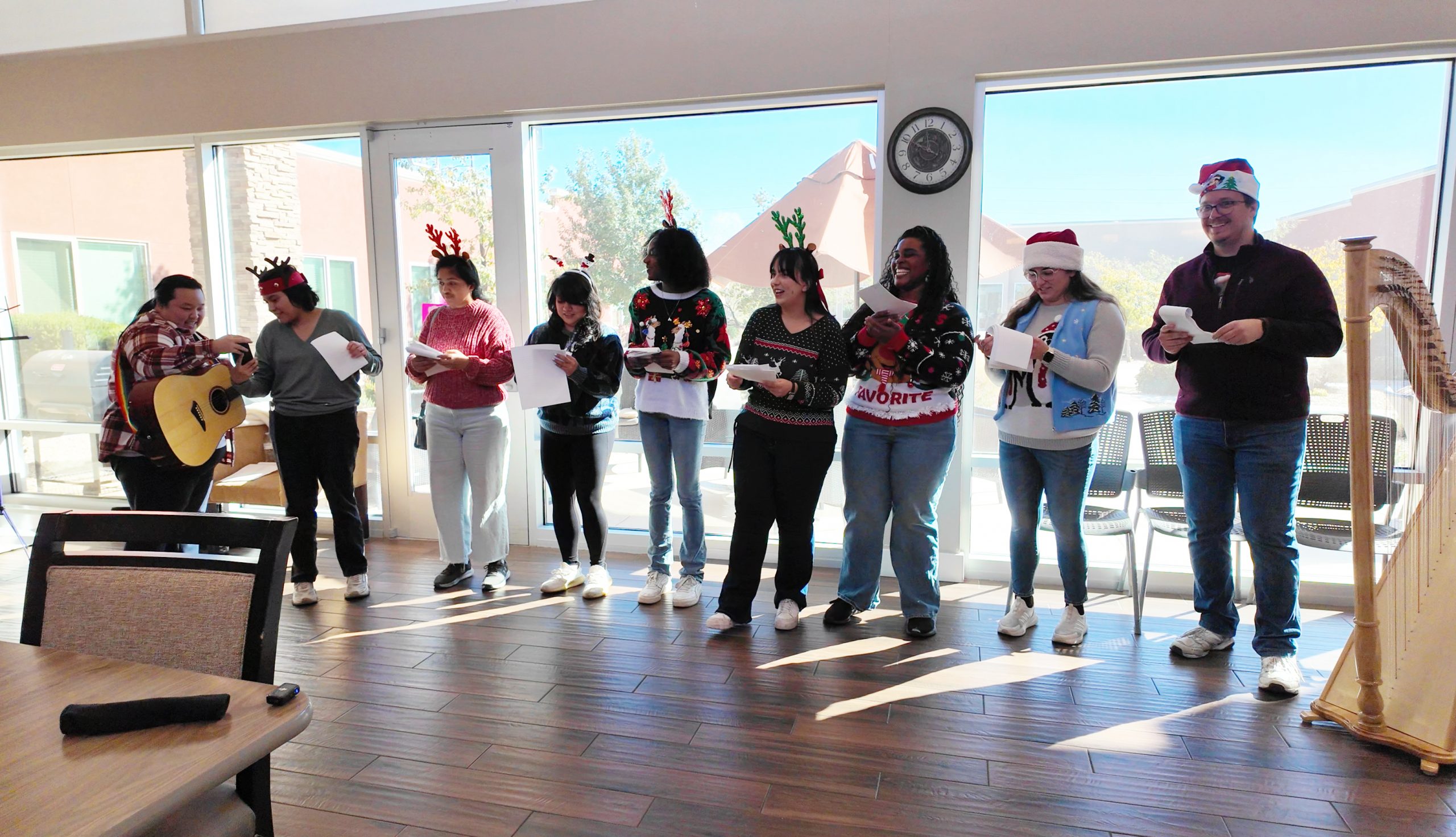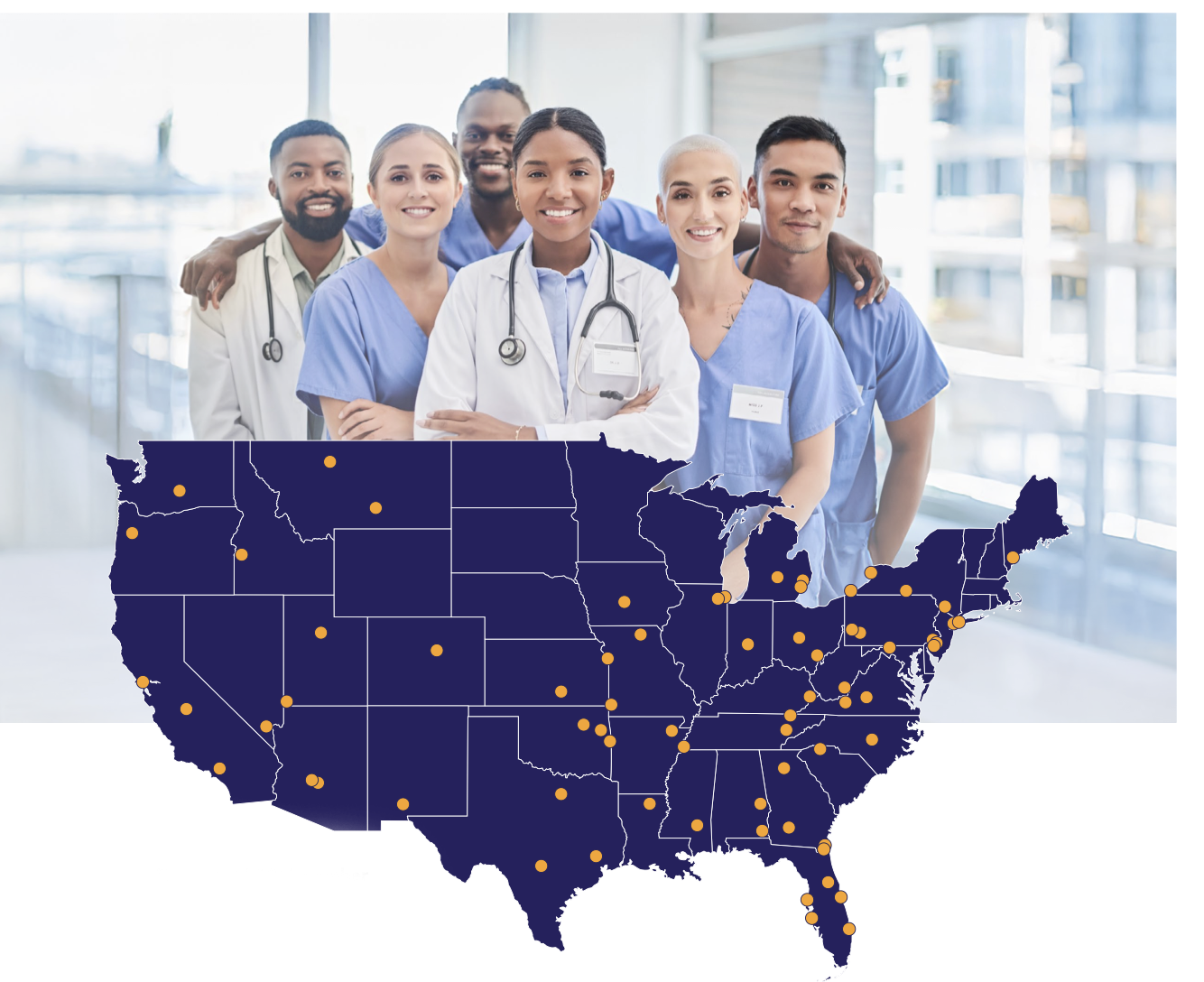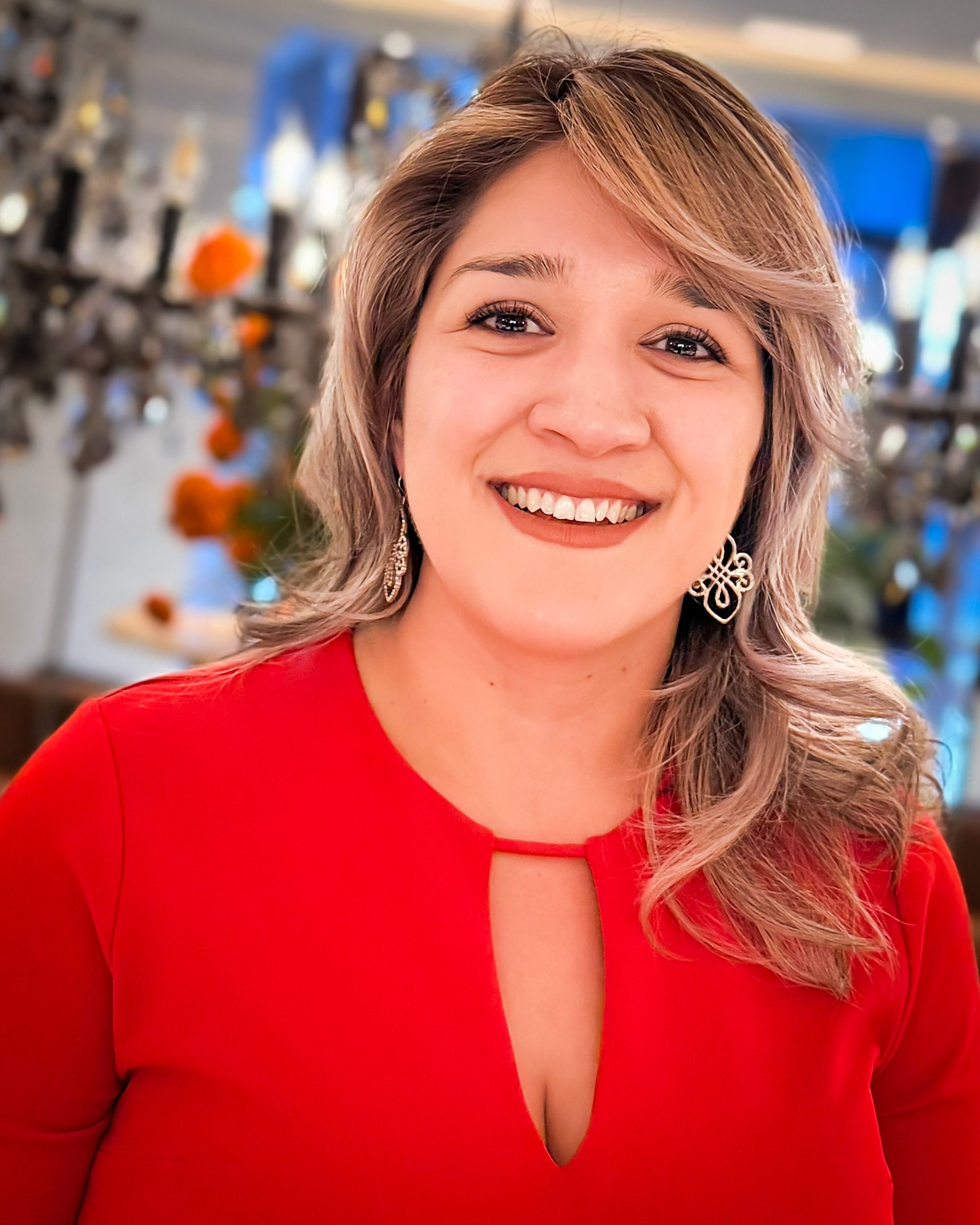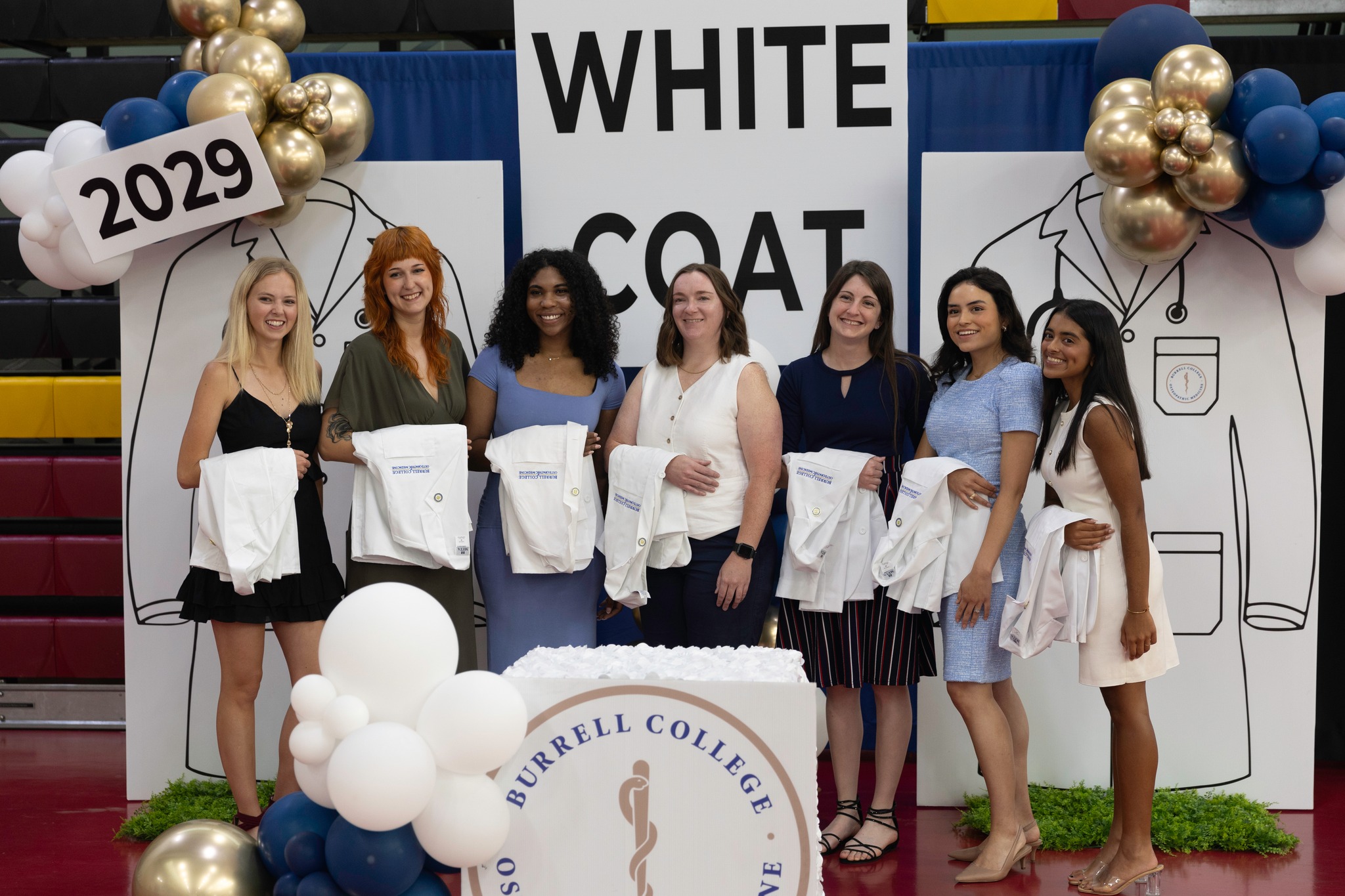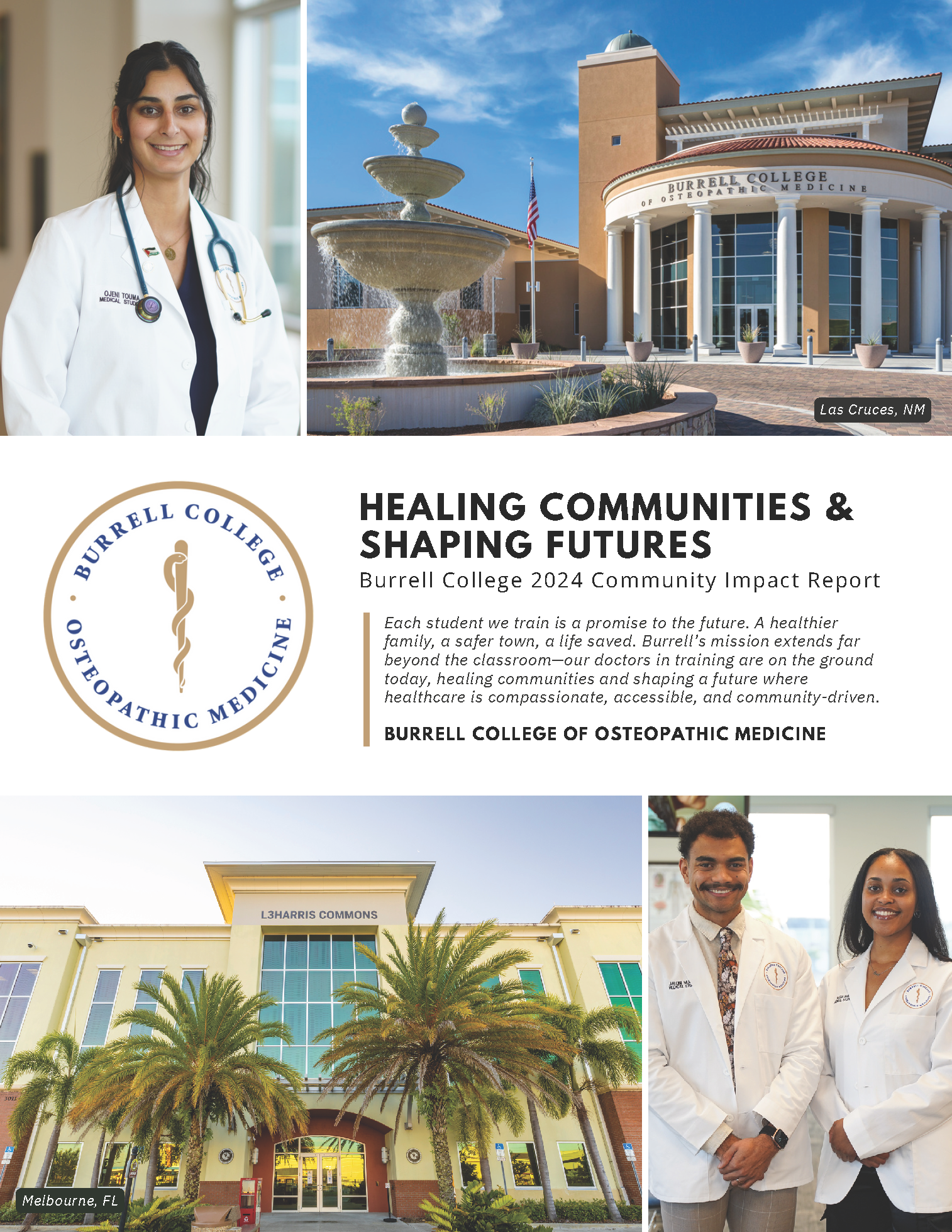
The Burrell College of Osteopathic Medicine’s inaugural class is in their third year of study and the students are completing their clinical clerkships at hospitals and health clinics all over the Southwest, from Las Cruces and El Paso to Northern New Mexico and Tucson. Medical student Robyn Marks just completed two back-to-back family medicine rotations at El Centro Family Health clinic in Las Vegas, New Mexico.
“I didn’t expect to be doing too many procedures right off the bat, but as it turns out, because this is such a rural setting, I got an unbelievable amount of hands-on experience in the clinic, as well as in the emergency room (ER) and even in the operating room (OR),” Marks said.
As surgical consults came through the clinic, Marks showed an interest and the surgeons invited her to shadow them in surgery. She started regularly following the orthopedic surgeons on Mondays and the general surgeons on Wednesdays. She worked at the family practice clinic on Tuesdays, Thursdays, and Fridays and took advantage of another shadowing opportunity to work in the ER in the evenings. Because it is a small town and Marks worked two rotations back-to-back, she had the opportunity to see many patients throughout their follow up appointments. This allowed her to build relationships with the patients and helped her learn to track multiple health problems over time.
“El Centro also presented me with the unique experience to be involved in Hepatitis C treatment and opiate addiction treatment,” Marks added. “These are very sensitive topics for patients but they were all open to speaking to me about their backgrounds and excited to help me learn about the treatment processes as well as general health maintenance for patients with complicated health histories. El Centro tries to be a one-stop shop for rural health care, so there is behavioral health counseling and group education programs just down the hall. There is a whole team of providers working very closely with one another to help provide quality healthcare for this underserved area which provided me the opportunity to learn from not only my precepting physician, but also the behavioral health counselors, nurse practitioners, and physicians assistants.”
The fascinating and important work being done at El Centro Family Health is featured in the award-winning documentary film, The Providers. Learn more at: theprovidersdoc.com.

To better understand the trials and tribulations of working in a rural and underserved community, we asked Marks to walk us through a typical day in the life of a third year medical student.
6:15am: Wake up and continue studying topic fell asleep reading about the night before, while eating breakfast.
7:45am: Report to the clinic. Review and discusses cases scheduled for the day with preceptor.
8:00am – 12:00pm: See, on average, nine to 11 patients under the guidance of precepting physician. Common ailments include Hepatitis C, drug addiction, diabetes, hypertension, obesity, endocrine and thyroid disorders, adrenal problems, and back pain. “We’re trying to get these patients back into healthy thinking and healthy habits,” Marks said. “A lot of these patients don’t have coping mechanisms, so we help connect them with behavioral health counselors. I’ve been learning how to talk about difficult or sensitive subjects with patients and how to determine what level of care patients need.”
12:00pm: Eat packed lunch at desk while catching up on patient logs and medical records. Study for school or on cases seen that morning.
1:00pm – 6:30pm: Continue seeing another 12 to 14 patients in the afternoon. “Some doctors from the University of New Mexico put together a program called Project Echo, which is a panel of specialists who provide rural care outreach,” Marks explained. “For our Hep C patients specifically, we get their history and their labs, and then do a video conference call and chat with the specialists in Albuquerque to discuss the best treatment options. It’s an amazing program that has brought a lot of healthcare access to rural communities in New Mexico.”
7:00pm: Head to the community recreation center for a workout or to play volleyball. “I try and get a workout in every day. Doing something for myself is important to help me de-stress and keep focused,” Marks said.
7:45pm: Clean up quickly and throw on scrubs. Eat a quick dinner and then report to the ER, or eat dinner at the hospital.
8:00pm – 1:00am: See patients in the ER under the guidance of precepting physicians. Marks said, “In the ER, we treat a lot of sports and ranching accidents, like hand injuries from roping and barbed wire cuts. I got to assist in stapling a scalp laceration, which was an interesting experience. During lulls in the ER, I study or log and record cases at my desk.”
1:30am: Arrive home, eat a snack, and study another hour before falling asleep.
This is a typical schedule for Tuesday, Thursday, and Friday. Marks is just as busy throughout the rest of the week studying, shadowing physicians, and trying to carve out personal time for herself.
Monday: See patients in the orthopedic surgery clinic under the guidance of precepting physician. See an average of two to three patients in the morning and spend the afternoon researching and studying.
Wednesday: Spend the day shadowing general surgeons. “On these days, I’m in the OR lounge early to review what I studied the night before. This is a great opportunity to learn from discussions the nurses and OR techs are having while prepping for the day. Surgery starts at 8am. The surgeons grill me on topics I’ve been studying, go over charts and x-rays, and allow me to ask questions before I scrub in with them. We generally see four or five cases, sometimes lasting all day. Sometimes the surgeons will invite me to dinner after, which essentially ends up being a two-hour lecture and study session.”
Saturday and Sunday: Free time is usually spent hiking, mountain biking, and exploring the state parks in the area. Marks sometimes ventured into town for live music and good food. “But even if I’m in a bar listening to live music, I’ll probably be at a table in the back with a book open. I’m always studying,” she said. Sunday is reserved for more studying and preparing for the rest of the week.

